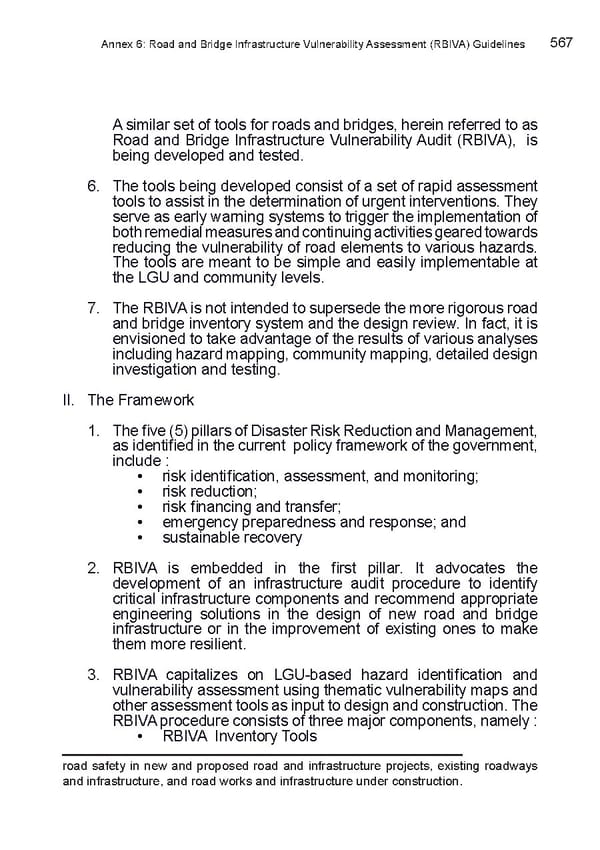Annex 6: Road and Bridge Infrastructure Vulnerability Assessment (RBIVA) Guidelines 567 A similar set of tools for roads and bridges, herein referred to as Road and Bridge Infrastructure Vulnerability Audit (RBIVA), is being developed and tested. 6. The tools being developed consist of a set of rapid assessment tools to assist in the determination of urgent interventions. They serve as early warning systems to trigger the implementation of both remedial measures and continuing activities geared towards reducing the vulnerability of road elements to various hazards. The tools are meant to be simple and easily implementable at the LGU and community levels. 7. The RBIVA is not intended to supersede the more rigorous road and bridge inventory system and the design review. In fact, it is envisioned to take advantage of the results of various analyses including hazard mapping, community mapping, detailed design investigation and testing. II. The Framework 1. The five (5) pillars of Disaster Risk Reduction and Management, as identified in the current policy framework of the government, include : • risk identification, assessment, and monitoring; • risk reduction; • risk financing and transfer; • emergency preparedness and response; and • sustainable recovery 2. RBIVA is embedded in the first pillar. It advocates the development of an infrastructure audit procedure to identify critical infrastructure components and recommend appropriate engineering solutions in the design of new road and bridge infrastructure or in the improvement of existing ones to make them more resilient. 3. RBIVA capitalizes on LGU-based hazard identification and vulnerability assessment using thematic vulnerability maps and other assessment tools as input to design and construction. The RBIVA procedure consists of three major components, namely : • RBIVA Inventory Tools road safety in new and proposed road and infrastructure projects, existing roadways and infrastructure, and road works and infrastructure under construction.
 Local Road Management Manual Page 567 Page 569
Local Road Management Manual Page 567 Page 569